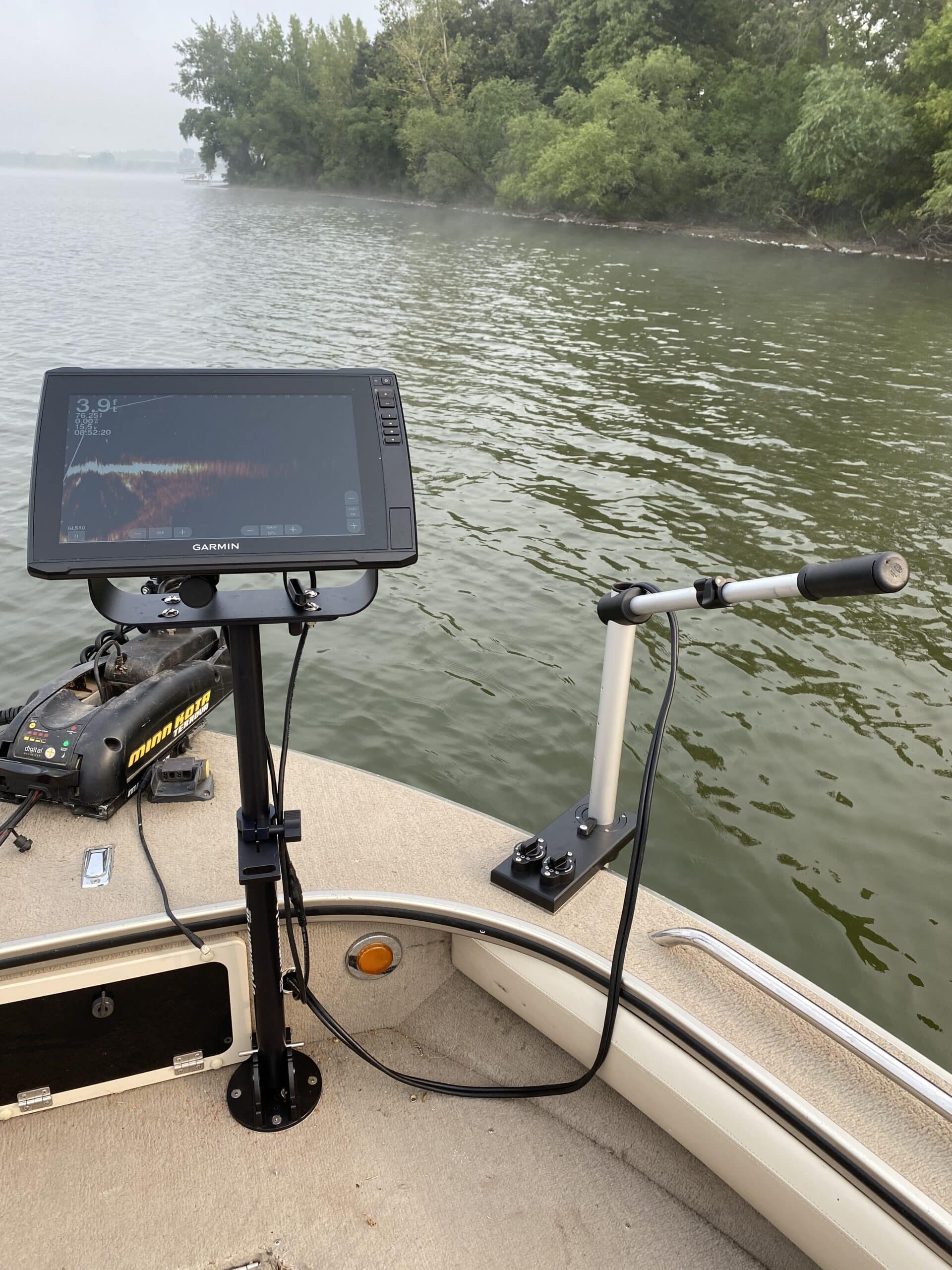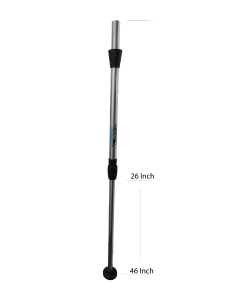Bass Boats generally have a trolling motor deck with sufficient flat surface mounting for a baseplate.
Any level area that has a 4×4 inch area that is flat can use a simple sub plate mounting.
Be sure however that the location of the downrod will be conveniently located. For example, if you typically fish from the Seat Post at the center of the deck, the trolling motor deck may place the downrod too far away to be convenient to turn. If this is the case, consider the pedestal mounted baseplates as they are able to be positioned back slightly and thus may be more user friendly.
Baseplates sit atop the sub plate using one of two mounting methods.
- Thumbscrews: a couple of nylon thumbscrews that act as a quick removal as well as a strain relief should the downrod hit something while deployed.
- Magnetic Switches: magnetic switches
Baseplate selection should take into consideration the span, or distance, from the outer edge of the sub plate to the outside rub rail of the boat. Refer to the drawing below, Dimension D.

This is a great option for all types of bass boats. Skeeter, Ranger, Bass Cat, Vexus, Nitro, Champion, Lowe, Lund, as well as all other bass boats.
Baseplates sit atop the upper pedestal plate using one of two mounting methods.
- Thumbscrews: a couple of nylon thumbscrews that act as a quick removal as well as a strain relief should the downrod hit something while deployed.
- Magnetic Switches: dual 150lb holding strength magnetic switches hold the baseplate to the pedestal
All Standard baseplate systems include a plastic coated stainless steel tether to hold the baseplate to the boat. Should the downrod hit something in the water and cause the baseplate to break away from the mounting, the baseplate will follow the downrod overboard and into the lake. If you do not wish to dive for your baseplate, the cable is the best means to hold the baseplate to the boat.











Reviews
There are no reviews yet.